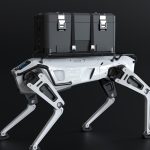Luxury automaker Mercedes-Benz showcased two contrasting approaches to contemporary driving with the introduction of the fully-electric EQS 450 4Matic Sedan and the performance-oriented AMG CLE 53 Cabriolet. These new models highlight the brand’s continued diversification within electric and internal combustion engine (ICE) lineups. By offering both advanced electric technology and traditional ICE performance features, Mercedes-Benz appeals to a broad market of drivers who value distinct automotive experiences. The brand’s deployments of sophisticated design and artificial intelligence-driven features also show an increased focus on digital user interaction and customization within their vehicles.
Other reports about the Mercedes-Benz EQS series and AMG models have typically emphasized the push towards electrification and the evolving balance between technological integration and driving dynamics. While previous articles focused predominately on specifications, range promises, and future model lineups, the current overview includes first-hand observations about the practical use of AI interfaces, the real-world feel of cabin features, and the nuanced feedback from safety systems. Notably, reactions have diverged regarding the embrace of digital assistance, safety interventions, and their practical reliability, with some prior commentary showing more enthusiasm for their seamlessness, in contrast to newfound critical perspectives here.
What Sets the EQS 450 4Matic Sedan Apart?
The EQS 450 4Matic Sedan arrives as a fully electric offering with a focus on refined design and luxury amenities, including the “one bow” Luxury Line exterior styling and DD2 “Manufaktur” interior configuration. Equipped with 335 horsepower and rapid acceleration provided by 590 lb-ft of torque, the car emphasizes a smooth driving character rather than outright performance. Mercedes-Benz states,
“Our goal is to deliver sustainable luxury and progressive digital features that set a new standard in comfort,”
reflecting the car’s intended market position. The sedan’s 367-mile range intends to answer range anxiety concerns, while its customizable Nappa leather interior, 64-color ambient lighting, and advanced in-car technology reinforce its premium status.
How Does the AMG CLE 53 Cabriolet Emphasize Performance?
The AMG CLE 53 Cabriolet distinguishes itself with a 3.0-liter turbocharged inline-six engine, producing 443 horsepower and delivering a zero-to-sixty time of 4.0 seconds. The convertible configuration and AMG branding underscore its sports-oriented nature, especially as Mercedes-AMG vehicles are typically designed for both luxury and performance. The nine-speed automatic transmission and distinctive exhaust note offer a contrasting experience to the electric EQS, with a more visceral and responsive drive. However, the model’s fuel efficiency remains modest at 19 miles per gallon in the city and 26 on the highway, which demonstrates a tradeoff between enthusiast performance and everyday practicality. Safety system interventions and digital assists have prompted mixed reactions, raising usability concerns in real-world scenarios.
What Impact Do Advanced Digital and AI Features Have?
Both the EQS 450 and AMG CLE 53 incorporate artificial intelligence-driven features, supporting increased user interaction for navigation, information retrieval, and vehicle control. The onboard computer and voice-activated systems, branded as “Hey Mercedes,” enable drivers to request information or execute certain tasks, although real-world experience outlines occasional intrusive behaviors and unexpected responses. As stated by Mercedes-Benz,
“My goal is to constantly evolve in order to give you the best possible support.”
The AI’s attempts at proactive assistance, however, have sparked debate around their helpfulness and reliability, particularly when unprompted or misaligned with driver expectations.
Both vehicles, retailing at $134,860 for the EQS 450 and $90,370 for the AMG CLE 53 Cabriolet, underscore Mercedes-Benz’s continuing commitment to offering diverse luxury mobility choices. The divergence between electric refinement and ICE sportiness demonstrates a deliberate strategy to meet changing customer demands, with digital integration forming a core part of the brand’s ongoing evolution. Buyers now face choices not just between powertrains, but also in terms of how much digital interaction and automation they are comfortable with in new luxury vehicles. For those evaluating a new Mercedes-Benz, understanding these user-experience elements alongside technical specifications will lead to a more informed decision. Prospective customers should carefully consider the influence of AI-driven features on their day-to-day interactions, especially as these tools increase in complexity and scope.










